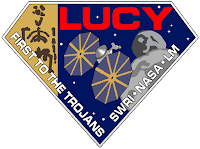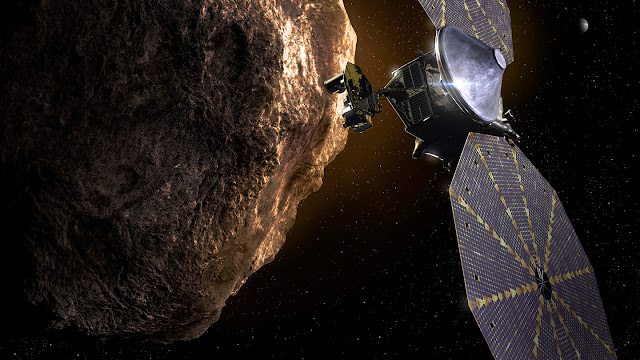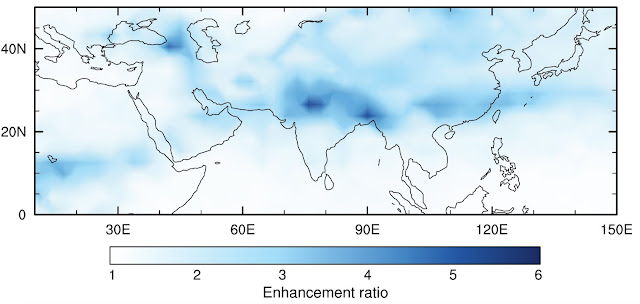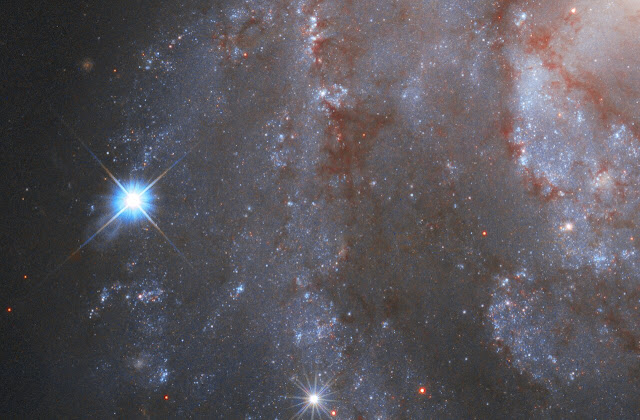NASA / ESA - Hubble Space Telescope (HST) patch.
May 19, 2022
A Dazzling Hubble Collection of Supernova Host Galaxies
Spanning from 2003 to 2021, this collection of images from the NASA/ESA Hubble Space Telescope features galaxies that are all hosts to both Cepheid variables and supernovae. These two celestial phenomena are both crucial tools used by astronomers to determine astronomical distance, and have been used to refine our measurement of Hubble’s constant, the expansion rate of the Universe.
Hubble Captures Supernova in NGC 2525
Each of the images in this special collection features a spiral galaxy that hosts both Cepheid variables and a special class of supernovae, two remarkable stellar phenomena that on the face of it do not have much in common: Cepheid variables are pulsating stars that regularly brighten and dim and type Ia supernovae are the catastrophic explosions that mark the death throes of a hot, dense white dwarf star. However, both can be used by astronomers to measure the distance to an astronomical object.
Spirals Are In This Season
Establishing the distance of a celestial body is an enormous challenge for astronomers; it can be difficult to distinguish between objects that are dim and relatively close to the Earth and those which are bright and distant. To help overcome this challenge, astronomers have developed what is known as the cosmic distance ladder, a series of distance-determining methods, organised by the relative distances that they can measure. Two important steps in this ladder are Cepheid variables and supernovae: Cepheid variables because the period with which they pulsate can be used to calculate their distance; and supernovae because every type Ia supernova explosion reaches the same known luminosity, meaning that its brightness as viewed from Earth can be used to derive its distance. All the galaxies presented in this collection host Cepheid variables and have had at least one type Ia supernova explosion occur in them within the last 40 years. One of the galaxies, NGC 2525, even contained a supernova that was caught in real time in a remarkable timelapse.

Four Filter Fusion
Even before it was launched, one of Hubble’s main science goals was to observe Cepheid variables and supernovae. These observations can help measure the expansion rate of the Universe, a value which astronomers call the Hubble constant. Generations of astronomers have refined this value over almost 30 years using data from more than 1000 hours of Hubble time. Most recently, a team of astronomers called SH0ES [1] used observations of all the supernovae seen by Hubble in the last 40 years — including those in the galaxies pictured here — to determine the value of the Hubble constant as 73.04 ± 1:04 kms-1 Mpc-1 [2].
Galactic Conjunction
“This is what the Hubble Space Telescope was built to do. You are getting the standard measure for the Universe from the gold standard of telescopes,” said Noble Laureate Adam Riess of Johns Hopkins University in Baltimore, Maryland, who leads the SH0ES Team. “This is Hubble’s magnum opus.”
A Galactic Powerhouse
Interestingly, the expansion rate determined from observational data from telescopes is significantly different from the value predicted by our current standard cosmological model of the Universe. The richness of the Hubble data means that this is vanishingly unlikely to have happened by a chance selection of misleading observations.
A Dazzling Hubble Collection of Supernova Host Galaxies
The wide collection of Cepheid variable and supernovae-hosting galaxies observed by Hubble were picked out in six different proposals for observing time with the telescope [3]. Whilst these proposals were part of Hubble’s decade-long quest to precisely measure the expansion rate of the Universe, the observations also produced a spate of beautiful galactic portraits, such as those of NGC 5643, NGC 7329, and NGC 3254. Still others have previously been featured in Hubble Pictures of the Week and other releases, including NGC 691, NGC 1559, NGC 2525, NGC 2608 and NGC 3147.
Notes
[1] SH0ES stands for “Supernova, H0, for the Equation of State of Dark Energy”
[2] The units of the Hubble constant — kms-1 Mpc-1 — are kilometres per second per megaparsec. If you multiply the distance to an astronomical object in megaparsecs by the Hubble constant you obtain the speed at which that object is receding from Earth as a result of the expansion of the Universe.
[3] The demand for observation time with Hubble is still extremely high, even after more than 30 years since the telescope’s launch, and in order to secure time astronomers need to justify in a written proposal why their work will be helpful and important to the astronomical community.
More information
The Hubble Space Telescope is a project of international cooperation between ESA and NASA.
The complete list of galaxies imaged above which are hosts to both Cepheid variables and supernovae consists of: NGC 691, NGC 1559, NGC 2525, NGC 2608, NGC 3147, NGC 3583, NGC 5468, NGC 5643, NGC 5861, NGC 7541, Mrk 1337, NGC 4680, NGC 5728, NGC 7329, NGC 7678, M101, NGC 1015, NGC 1309, NGC 1365, NGC 1448, NGC 3021, NGC 3370, NGC 3447, NGC 4424, NGC 5917, NGC 7250, UGC 9391, M106, NGC 3982, NGC 4536, NGC 4639, NGC 5584, The Antennae Galaxies, NGC 2442, NGC 3972, NGC 105 and NGC 3254.
The SH0ES team of astronomers in this study consists of Adam G. Riess (Space Telescope Science Institute and the Department of Physics and Astronomy, Johns Hopkins University), Wenlong Yuan (Department of Physics and Astronomy, Johns Hopkins University), Lucas M. Macri (George P. and Cynthia W. Mitchell Institute for Fundamental Physics and Astronomy, Texas A&M University), Dan Scolnic (Department of Physics, Duke University), Dillon Brout (Center for Astrophysics, Harvard & Smithsonian), Stefano Casertano (Space Telescope Science Institute), David O. Jones (Department of Astronomy & Astrophysics, University of California, Santa Cruz), Yukei Murakami (Department of Physics and Astronomy, Johns Hopkins University), Louise Breuval (Department of Physics and Astronomy, Johns Hopkins University), Thomas G. Brink (Department of Astronomy, University of California, Berkeley), Alexei V. Filippenko ( Department of Astronomy, University of California, Berkeley and Miller Institute for Basic Research in Science, University of California, Berkeley), Samantha Hoffmann (Space Telescope Science Institute), Saurabh W. Jha (Department of Physics and Astronomy, Rutgers, the State University of New Jersey), W. D'arcy Kenworthy (Department of Physics and Astronomy, Johns Hopkins University), John Mackenty (Space Telescope Science Institute), Benjamin E. Stahl (Department of Astronomy, University of California, Berkeley) and Weikang Zheng (Department of Astronomy, University of California, Berkeley).
Links:
A Dazzling Hubble Collection of Supernova Host Galaxies
https://esahubble.org/videos/heic2208a/
Images of Hubble: https://esahubble.org/images/archive/category/spacecraft/
Hubblesite release: https://hubblesite.org/contents/news-releases/2022/news-2022-005
Science paper: https://arxiv.org/pdf/2112.04510.pdf
ESA's Hubble Website: https://esahubble.org/
Images Credits: NASA, ESA/SA/Hubble & NASA, A. Riess and the SH0ES team/Acknowledgment: Mahdi Zamani/Video Credits: Directed by: Bethany Downer and Nico Bartmann/Editing: Nico Bartmann/Web and technical support: Enciso Systems/Written by: Bethany Downer/Music: Mylonite - Breath of my Soul/Footage and photos: NASA, ESA/Text Credits: ESA/Hubble Chief Science Communications Officer, Bethany Downer.
Greetings, Orbiter.ch

































-angle-text-labels.png)









